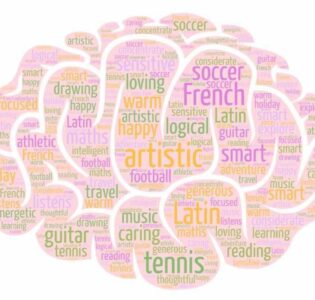The Brain at School: 10 tips to promote brain education at school!
Catherine Brandon, Director, Genazzano Institute
Learning about the latest research into brain health and function can assist students to understand mental health, to make choices for best brain function and wellness and to improve learning. Ten ways to incorporate leaning about the brain at school are highlighted below!
1) Highlight brain links to the curriculum
Whether you are teaching PE, RE, Science, English or indeed any study, there are lots ways you can link the learning with information about the brain to spark an interest and share information about the amazing brain. Some examples are:
- Q: What is the BEST thing you can to promote brain health? A: EXERCISE
- The DAX gallery promotes awareness of mental illness through art?
- Q: Is handwriting notes or typing better for learning and memory? A: HANDWRITING
- Did you know that memory for particular events can be triggered by music that you heard at the time?
- Ancient Egyptians are responsible for the oldest written record using the word ‘brain’ (in hieroglyphics)
2) Competitions
Many organisations offer competitions to encourage an interest and promote information on neuroscience. Here are a few:
- Genazzano Institute ‘Explain the Brain’ Design a Video or Infographic Competition –Supported by partners Education Perfect
- Australian Brain Bee – Year 10 Neuroscience Competition
- Amazing Brain Primary Art Competition
- Neuroscience Essay – High School category
3) Invite experts to speak
on a range of topics related to the brain that are appropriate for different age students/ subject areas. For example:
- Positive activities to promote mental health
- Healthy brain foods
- Best brain strategies for optimal learning
- Positive activities to promote mental health
- Introduction to Neuroscience
- Alcohol and drug impact on brain
- How does memory work?
- Technology and the brain
4) Teach principles from ‘Science of Learning’
Key principles from psychology, education and neuroscience can support improved learning. Students can benefit by using these strategies to learn and study. This poster from UQ is a helpful tool. Boost Your Learning
5) Feature and talk about books, websites or journals.
Share news or research articles of interest to encourage learning and interest about the brain, psychology and learning. Some examples are:
- My First Book About the Brain (Wynne, P & Silver, D)
- Young Genius: Brains (Lennard,K)The Great Brain Book (Newquist, HP)
- Neurocomic (Ros, H & Farniella, M)
- The Owner’s Manual for Driving your Adolescent Brain (Deak J, Deak T & Harrison F)
- https://www.scientificamerican.com/mind/
- https://www.psychologytoday.com/au
- Hello Brain
- BrainFacts.org
6) Watch video series or youtube clips on the brain
- Redesign My Brain: ABC TV with Todd Sampson series 1 &2
- The Brain with David Eagleman
- Mind/ Brain Crash Course
- Brain Games- National Geographic
- Charlie Rose Brain Series
7) Encourage healthy brain and mind practices
in the school, such as brain breaks, mindfulness activities, embracing error for learning and seeking counselling support if needed.
8) Start a ‘Neuro club’
Learn about the brain – using discussion, clips and other Resources. You may wish to connect with other young people such as YNA or IYNA (International Youth Neuro) who are keen to share and learn.
9) Encourage students to research a project
that features an aspect of the brain related to an area of their interest. For example:
- Inside the mind of the champion athlete
- How does the brain respond to music?
- How has technology changed the brain
- The Brain through the Ages
- How does a baby’s brain develop?
10) Use classroom teaching resources such as:
Catherine Brandon, Director, Genazzano Institute




